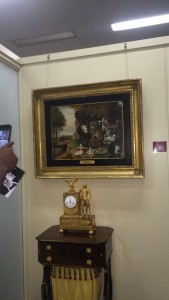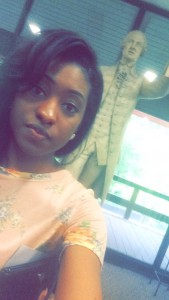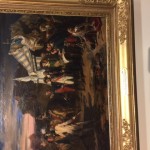Krystal Fitzgerald
Extra Credit- Tuscaloosa Museum of Art
Tuscaloosa Museum of Art contains art from 1775 and on. The museum houses many images relevant to our class studies. However, I believe there were a few pictures and monuments most prominent to the time period we are studying. There was one section of the museum, which highlighted the more important parts of our course. The monument within the museum that stood out to me most was the statue of John Hancock.
John Hancock played a key role in many important American events; such as, the Continental Congress, American Revolution, and signing of the Declaration of Independence. His noble uncle, from whom he inherited both social and political power, raised Hancock. Hancock became known as a loyalist and started his involvement in revolutionary politics. His political prowess led to participation in the announcement of independence from Great Britain.
In 1776, Hancock became a member of Stamp Act Congress. This elite group of individuals spoke against Britain’s taxation on paper goods. Hancock owned a ship named Liberty, which he attempted to use as a means to smuggle untaxed goods--but to no avail, the ship was impounded. However, Hancock is perhaps most infamously known for his signature on the Declaration of Independence.
It is clear that Hancock wanted freedom from Britain, due to his voice against many taxes and rules imposed by Britain. Hancock proves this dissidence by the signing of the declaration of independence. In previous history courses, we learned one of the reasons why Hancock wrote his signature so big. Hancock signed the Declaration of Independence in 1776 along with other influential men. However, Hancock believed that there should be no speculation regarding who signed the document. Therefore, he wrote his name large enough so anyone in Britain would not have to guess when seeing his signature.
Fun Fact: When visiting the museum, one of the workers informed me that his statue took two days to move into the museum. When deciding that Hancock would be a part of the museum, contractors had to re-frame the doorways because the statue could not fit through the door.



